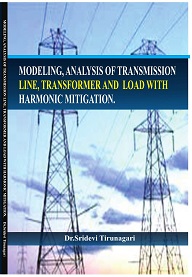
Dr.Sridevi Tirunagari
Dr.Sridevi Tirunagari born in India in 1978. she received B.Tech in EEE
from Nagarjuna University in 1999, M.Tech in Power systems from
Jawaharlal Nehru Technological University, Anantapur, India in 2005
and Ph.D from J.N.T.U Hyderabad India in 2016.She is working as
assistant professor in GNITS Hyderabad. She is having fifteen years of
experience in Teaching. Five International Journals and four
international conference papers are at her credit. She is a member of
ISTE and IEEE. Her research and study interests include Power quality,
Modeling of power system components and Harmonics in power
systems.
Read more...


